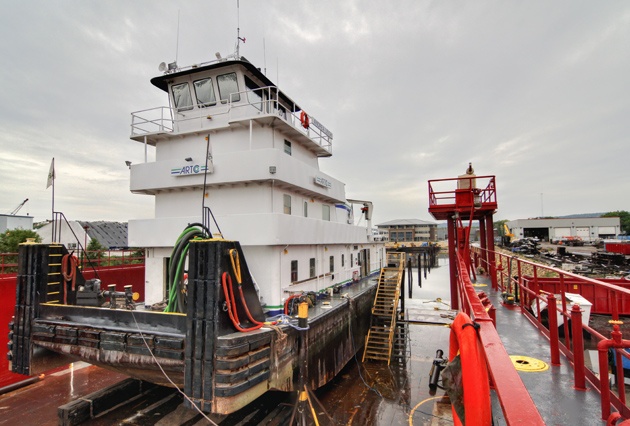Seasonal Preparations: When to Schedule Your Dock Repairs
Exactly How to Address Common Dock Repair Issues for Safe Water Activities

Identifying Common Dock Issues
Identifying usual dock problems is critical for preserving the functionality and security of your waterfront home. Normal inspections can assist discover issues before they end up being extreme, making sure both the durability of the dock and the security of those that utilize it.
Another typical issue is the destruction of flotation protection devices. These devices are crucial for keeping the dock buoyant, and any damage or leaks can create the dock to checklist or sink. Consistently inspecting for leakages or water logged floats can preempt much more significant issues.
In addition, algae and barnacle accumulation on the dock's surface area can produce unsafe and unsafe conditions. This biofouling not just positions a risk to users but can additionally increase the deterioration of the dock materials.
Lastly, examining for signs of corrosion on steel elements is crucial. Rust can endanger the honesty of the dock's structure, making it unsafe. By routinely identifying these common dock problems, you can make certain that your dock continues to be safe and secure and practical for years to find.
Fixing Rotting Wood
When resolving the issue of rotting wood on your dock, it is crucial to act quickly to stop more wear and tear. Begin by completely checking the whole framework to identify all affected areas. Use a screwdriver to penetrate the wood; if it sinks in easily, the timber is likely decomposed and needs prompt attention.
Be certain to cut back to healthy and balanced, solid timber, guaranteeing you get rid of all jeopardized product. After elimination, treat the continuing to be timber with a timber chemical to protect against future rot.
Next, replace the gotten rid of sections with marine-grade lumber or pressure-treated timber, which are a lot more immune to water damages. Secure the new items with stainless-steel or galvanized bolts to protect against deterioration. Additionally, using a waterproof sealant to the brand-new timber can provide an additional layer of protection.
Securing Loose Boards
Just how do you guarantee your dock continues to be useful and risk-free for all its users? One critical element is safeguarding loose boards, which can or else posture significant risks. Loosened boards not just raise the risk of tripping yet can additionally endanger the architectural stability of the whole dock.

For reinstallation, use galvanized or stainless steel screws, as these materials use superior resistance to rust in marine environments. Make certain the screws are long sufficient to penetrate deep into the underlying support structure, but not as long that they extend through the dock's surface area. Pre-drilling pilot openings can help avoid the wood from splitting.
Lastly, preserve a regular examination timetable to identify and attend to any kind of brand-new concerns quickly. By securing loose boards efficiently, you add to the general safety and long life of your dock, making it a trustworthy platform for water activities.
Stabilizing Unsteady Pilings
Ensuring the security of unstable pilings is critical to maintaining a practical and risk-free dock. Make use of a degree to check for vertical alignment and guarantee they are driven deep sufficient right into the substrate to provide ample assistance.
If the pilings are found to be unpredictable, one effective method for support is the usage of extra supporting. Cross-bracing with dealt with lumber or galvanized steel can considerably boost stability. Anchor the click dental braces safely to both the pilings and the dock framework to disperse tons equally.

Regular upkeep and periodic reassessment of the pilings' security are important to guaranteeing long-term dock safety and security and capability.
Changing Rusty Hardware
Resolving unstable pilings is simply one facet of keeping a dock's honesty; an additional important issue is replacing corroded hardware. Over time, direct exposure to dampness and salt can lead to the oxidation and deterioration of screws, braces, and bolts, jeopardizing the entire structure's page safety. Normal assessment for corrosion is vital, particularly after extreme weather condition or seasonal changes.
When corroded equipment is identified, prompt activity is required. Begin by choosing marine-grade stainless-steel or galvanized hardware, both designed to stand up to the rough aquatic environment. Guarantee that you have the suitable devices, such as wrenches and screwdrivers, to securely remove the old, rusty pieces without creating additional damage to the dock.
After getting rid of the rustic equipment, extensively tidy the impacted areas to eliminate any kind of residual rust or debris. Apply a rust-inhibiting primer to subjected metal surfaces prior to installing the new equipment. Tighten up all components securely to protect against future helping to loosen, and regularly check the fittings to make sure continuous security.
Changing rustic hardware not only extends the dock's life expectancy yet also substantially enhances the safety and security of water activities. By proactively managing rust, you secure both the framework and its individuals, making sure a pleasurable and safe and secure waterfront experience.
Verdict
Normal inspections and upkeep are important to deal with usual dock repair concerns and make certain safe water activities. Such proactive steps contribute to the general safety and functionality of dock frameworks, cultivating a protected setting for water-based activities.
Making certain the safety of water activities pivots considerably on the appropriate maintenance and fixing of docks (Dock Repairs). These devices are necessary for keeping the dock buoyant, and any damages or slits can cause the dock to checklist or sink. By regularly recognizing these typical dock issues, you can make sure that your dock anonymous remains useful and protected for years to come
Ensuring the security of unstable pilings is critical to maintaining a useful and secure dock.Normal examinations and maintenance are crucial to address common dock fixing issues and guarantee safe water tasks.